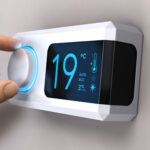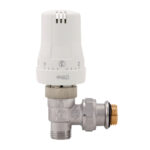With the end of summer and the beginning of the fall season, one must have a think about what to do before the temperatures drop and the day of the heating plants starting comes closer.
Enea (Italian National Agency for new technologies, energy and economic sustainable development) recommends ten simple and useful suggestions to combine comfort and savings.

The heating system consumes and pollutes less when it is proprerly set, clean and without limescales.

High temperatures in the house can be damaging for both health and savings: 19°C is the right room temperature in order to feel comfortable. Each single degree less allows savings from 5% to 10% on the total consumption.

Keeping the heating system switched on night and day is useless, as in an efficient building the heat collected during the switch-on times guarantees enough comfort also when the system is off.

This is a very simple but effective solution which allows the reduction of heat dispersion, above of all when the radiator is built in the wall which reduces depth and isolation degree.

Closing the shutters or using heavy curtains reduces heat dispersion.

Curtains or furniture in front of the radiators or using radiators to dry linen obstacle heat diffusion in the rooms and it is source of wastefulness. It’s also a good habit not letting windows open for too long: to air out a room few minutes with open windows are enough, letting them open for too long time means only heat dispersion.

The first step to do in order to evaluate the condition of the walls’ and windows’ thermal insulation and the air conditioning plants efficiency is to do an energy diagnosis of the building with specialized technicians. They will suggest the intervention needed, evaluating the cost-benefit comparison.

From 2015 on, a part from rare situations, one can install only condensing boilers. It is suggested to replace the old boilers with condensing ones or with high efficiency heat pumps.

It is essential to provide the system with time programming (hour-day-week) which guarantees energy savings. Home automation and remote controls can also help to set the room temperature and functioning times through smartphones.

These valves adjust the hot water flow in the radiators, so that they won’t overcome the temperature set for the rooms.
DOWNLOAD THE PDF VERSION: